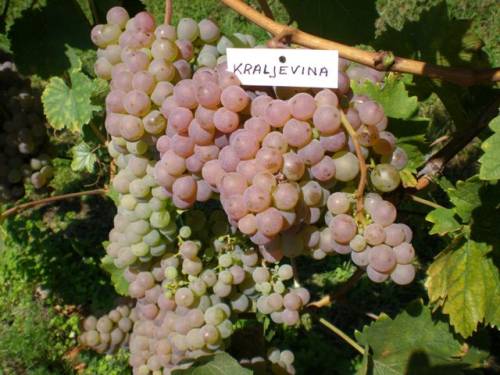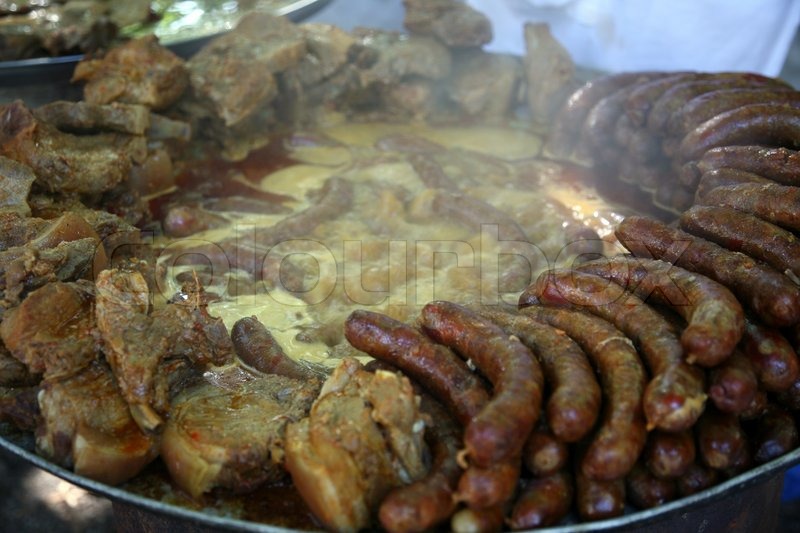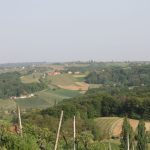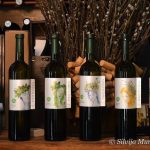Continuing TCN’s look at the indigenous grapes of Croatia on October 1, 2016, we move to the central Croatia, Zagreb region where kraljevina was once the most popular wine variety.
Kraljevina, sometimes called imbrina is an indigenous white wine variety that has probably gotten out of fashion the fastest of all Croatian wines. Just before the war of independence, in the late eighties, Kraljevina was still one of the most popular and widespread grape varieties in the central-Croatian region; in and around the city of Zagreb (the region where it grows is mostly called Prigorje). Not much is known of the origin of this variety, but it was never shown to be grown anywhere else except for the narrow region of Croatia (sometimes smaller vineyards of Kraljevina are also found just across the border in Slovenia). There was a misconception that the variety has a genetic link to the varieties from Portugal (due to an erroneous synonym for the variety and the fact that it shares the region in Croatia with Portugizac), but that has been genetically proven not to be correct.

Kraljevina vineyards produce quite a lot of grapes quite consistently – only extremely cold winters can hamper the yield, and the grapes never manage to accumulate a lot of sugars. The variety’s strongest suit is the fact that a small vineyard regularly produces a lot of grapes, which translates to a lot of wine. Wine made from Kraljevina is not very alcoholic, around 10%, very dry but rather high in acids. In the past Kraljevina was rarely used to create varietal wines, as they were considered not sweet enough to be enjoyed on their own. It was usually blended with other varieties, such as Graševina, Riesling etc growing in the region. And, traditional way of consuming either varietal Kraljevina or blends made with it is (and I do beg for the forgiveness of those reading this that are true wine-lovers and have not grown up in central Europe so you’re not prepared for this) mixed with carbonated water in the ratio 80:20, to give so-called “gemišt”. Mixing kraljevina with a bit of sparkling water bring out the best in it, making it even more refreshing, every Kraljevina’s flaw is suppressed and its qualities are brought forward, so people who enjoy gemišt now and then will tell you that no other variety can ever hope to give such good results. So, if you’re ever somewhere around Zagreb or on Plješivica, maybe invited to a barbeque or “kotlovina” on a hot summer’s day, and you’re offered a gemišt, try and fight your first impulse and give it a try. If it’s Kraljevina, there’s a chance you might even enjoy it.

And winemakers of Zelina (and the rest of Zagreb County) have branded their Kraljevina, and are trying to increase its quality; they’re working with the scientists to create clone selection that will enable the new vineyards to be planted with the best possible clones. Some are creating and bottling varietal wine, light and fresh, greeny-yellow in colour with mild flowery aroma: Puhelek-Purek, Jarec-Kure, Kos and several other wineries. Serve it cooled to 12°C, and have it either with fattier meals or any traditional meal for the Prigorje region – kotlovina, purica s mlincima (turkey with a very local pasta variety), cooked ham baked in the bread etc. And, we kept a surprise for the end: Puhelek-Purek family decided to make something no one would expect from this variety: a sparkling wine! Their Kraljica is the only Kraljevina sparkling wine, mostly considered to be a very successful experiment.










